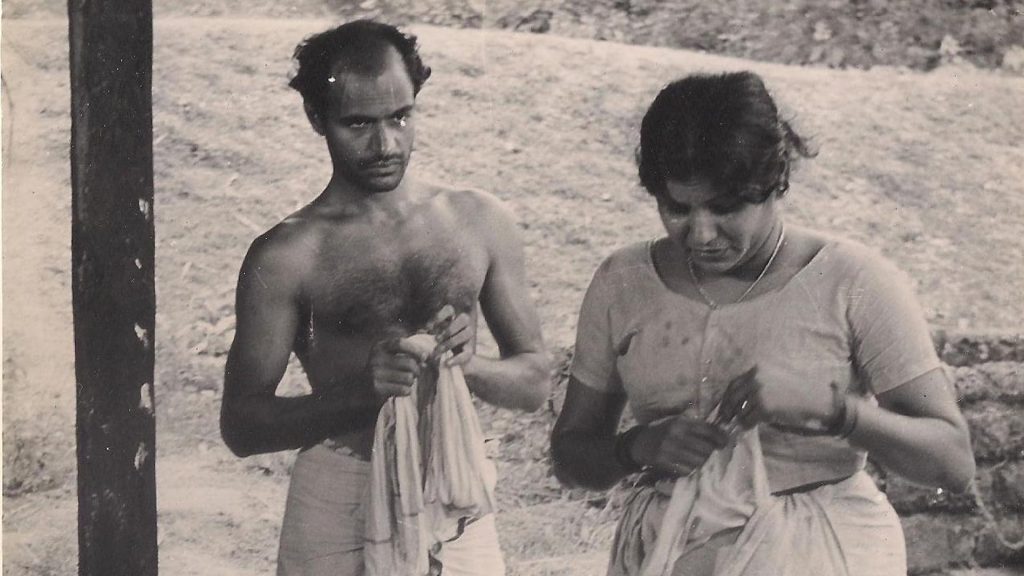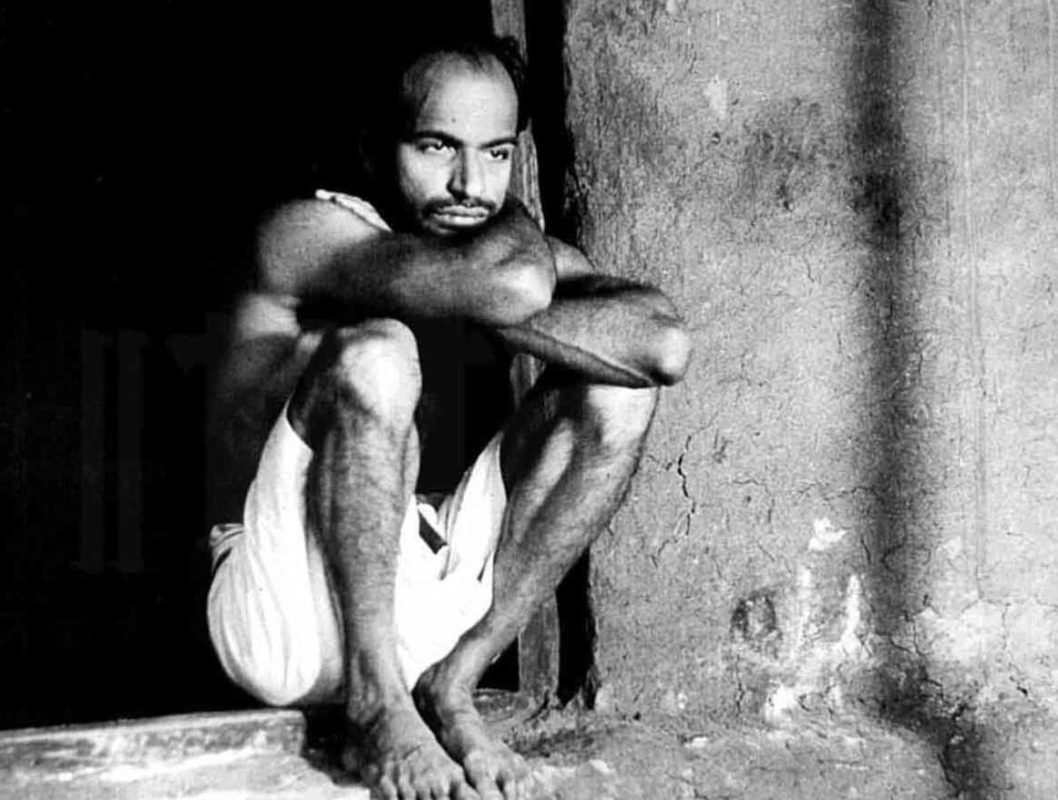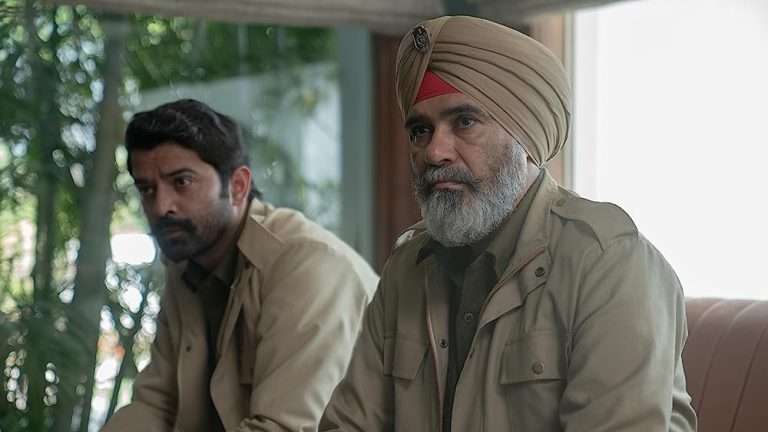The thirteenth-century Dominican monk James de Voragine, in his famous “Legenda Aurea” (“Golden Legend”), narrated the enchanting tale of the Seven Sleepers. A Christian legend that unfolds the story of seven young men from Ephesus who sought refuge in a secluded cave, driven by their desire to escape persecution by the Emperor Decius. In that cave, they fell asleep for 372 years. Upon awakening, they witnessed a transformed world, brimming with renewed hope.
The legend presents the transition from sleep to awakening as a profound metaphor, symbolizing a state of resurrection, a moment of rebirth, and re-emergence into a changed world. Similarly, Adoor Gopalakrishnan’s “Kodiyettam” (“Ascent,” 1978) explores the metamorphosis of Sankaran Kutty (Bharath Gopi), a man in his early thirties who remains trapped in an infantile state as he progresses towards manhood: A profound odyssey from the embrace of slumber through the shadows of somnolence, culminating in awakening.
Sleep extends beyond mere private, biological realms; instead, it is intricately woven within the rhythms of daily interactions, shaped, contested, and negotiated socially, culturally, and historically. However, films generally attribute a considerable significance to dreams, treating them as vital components in the storyline. In contrast, sleep is often relegated to a mere temporary layover, a brief respite on the path to the central narrative. Departing from conventional storytelling, with unmatched depth and systematicity, Adoor Gopalakrishnan’s “Kodiyettam” masterfully engaged with the subject of sleep and being awake as a potent object of sociocultural and political value.
Adoor Gopalakrishnan, celebrated as one of the most distinguished filmmakers in India, is revered alongside Satyajit Ray and Mrinal Sen. His neorealistic approach, characterized by a simple yet profoundly engaging narrative style, captures the rhythms of everyday lives in rural Kerala. Among his remarkable works, “Kodiyettam” emerges as a seminal film in the new wave cinema movement of Malayalam cinema.
“Kodiyettam” unfolds a world deeply anchored in patriarchy and masculinity, seen through the eyes of Sankaran Kutty. The structures of everyday lives don’t orchestrate his days and nights; instead, he finds his existence woven between the threads of his slumber. The article examines how Adoor employs sleep and wakefulness as metaphors to illuminate Sankaran Kutty’s transformative expedition towards embracing the moral and social responsibilities of manhood.
To deepen the understanding of the subject, the article is structured into three sections. In the first triad, it explores the striking portrayals of Sankaran Kutty’s sleep and its jarring interruptions, followed by his profound yearning for slumber, eventually leading to his desire to be wakeful, in harmony with the film’s unfolding narrative.
In the Embrace of Sleep: The Language of Sankaran Kutty’s Existence
The film opens with fireworks illuminating the night sky at a festival. Amidst the celebrations, Sankaran Kutty stands with his gaze drawn to the gambling tables. Unexpectedly, the police arrive on the scene, scattering the crowd in every direction. Among them, they apprehend Sankaran Kutty and take him to the police station. As he recounts the past night’s happenings in a teashop, he says he was detained by the police for the night and made to sit in the veranda of the police station. Remarkably, he found a sense of joy in this circumstance, as it offered him a splendid view of the fireworks from there.

Also Read: 35 Best Malayalam Movies of All Time
As the morning unfurls with the hustle and bustle of quotidian social engagements, Sankaran Kutty steps into the house, lays a mat on the floor, and promptly falls into a deep sleep. This moment marks the inaugural depiction of the sleeping image of Sankaran Kutty in the film. As his sleep continues, Vareeth Mappila (Kavalam Narayana Panicker), a local politician, prods his foot at Sankaran Kutty and asks, “Are you asleep or merely dead?” rousing him from his stupor. Vareeth Mappila urges him to attend the political rally in the evening. The abrupt endings of his sleep dictate Sankaran Kutty’s everyday existence.
Adoor’s use of sleep in the film’s opening act profoundly invites the viewer to grasp the essence of Sankaran Kutty’s character. As Sankaran Kutty accompanied the matchmaker (B.K. Nair) for a bride-seeing, he found himself seated on the veranda after lunch. It was not long before he drifted off to sleep, amidst the lively conversations around him. “Do you like the girl?” The matchmaker’s question pulls him from his slumber. In a daze, he instinctively replies, “Yes.” However, beneath the simple affirmation lies a more profound concern: he was significantly more preoccupied with his sleep than the girl in question.
He was married to the same girl, Santhamma (K.P.A.C. Lalitha). In the subsequent scene, she is preparing coffee in Sankaran Kutty’s house, while he is sleeping on his mat. She gently brushes her hand against his leg, trying to rouse him from sleep, and slips away to the kitchen to get some coffee for him. Upon returning, the mat lay empty, and he had vanished without a trace. This occasion captures the final moment, where Sankaran Kutty is depicted sleeping within his house.
Sankaran Kutty’s escape from the mat marks a pioneer moment, representing his earliest encounter with the realities of the social order that surrounds him. Despite his passion for festivals remaining undiminished, there’s a stark distinction from the last time, when he delightedly spent the night watching fireworks from the police station veranda. Now, however, he finds himself battling sleep amid the festivities, ultimately portrayed as dozing in a corner of the festival ground.
In the Yearning to Sleep: Witnessing the Thresholds of Reality
Sankaran Kutty’s homecoming from the festival in the morning marks a transformative shift in the film, a moment when his sleep is giving way to yawns. Santhamma greets him with a sharp rebuke as she sweeps the front yard. With frustration in her voice, she questions, “Why return so early? Why didn’t you wait for the festival season to be over?” Her gaze reflects a deep sorrow as she adds, “I am fed up living with you.” Sankaran Kutty slowly began to realize the weight of responsibility he bears. Alongside, a deep sense of sorrow envelops him as he looks at the battered bangle, which he had intended for Santhamma.
The camera gently closes in on his face, capturing the sadness and disappointment etched in his face. However, he continues to wander around places. Upon returning, he goes to his house to get some rest, as his expression clearly reflects his fatigue. It’s then that he discovers Santhamma’s mother (Adoor Bhavani) has taken Santhamma to her home, where Santhamma is expecting a child. He sits on his veranda, where the demands of everyday life take precedence over his weariness.
The film, thereon, follows Sankaran Kutty as he navigates the complexities of being a man in the patriarchal, masculine world. During his voyage, his quest for sleep becomes a profound metaphor for his struggles. This conflict unfurls through vivid scenes, including lying on the back of a bullock cart and sitting at the threshold of his home. He soon begins assisting a lorry driver (K.P.A.C. Azeez), a man Sankaran Kutty gradually comes to regard as the very embodiment of manhood.

Also Read: 15 Great Malayalam Movies to Stream on Prime Video
After taking up the job, Sankaran Kutty returns to his ancestral home and, to his surprise, finds his sister Sarojini (Kuttyedathi Vilasini) there, now married to a man from Trivandrum. Later that night, after spending hours aimlessly wandering around the temple grounds, he makes his way back home under the cover of darkness—only to discover his sister and her husband have taken over the house.
From inside, Sarojini calls out gently, “Your bedding is kept in the veranda.” A moment later, her husband’s curt voice follows: “Put out the light.” Sankaran Kutty quietly lifts the mat and lays it down in the corner of the veranda. Sitting beside it, he rests his head against a wooden pillar, his eyes drifting into the thick darkness spreading before him.
In Being Awake: The Rebirth of Sankaran Kutty
The words, “Put out the light,” articulated by Sankaran Kutty’s brother-in-law, encapsulate the profound meaning of what sleep means within a deeply entrenched patriarchal and masculine society. Here, the brother-in-law’s yearning for rest symbolizes the reward bestowed upon men by the social order for the fulfillment of their everyday duties. The final act of the film illustrates Sankaran Kutty’s remarkable transformation from his deep desire for sleep to a profound state of wakefulness. During one of their journeys, the lorry driver makes a stop to visit his mistress, Savitri (T. P. Radhamani).
After having a meal at the house, the lorry driver directs Sankaran Kutty to “sleep in the truck.” Yet, Sankaran Kutty stands outside the door and observes how the lorry driver emphatically asserts his ownership over Savitri and her body, since he provides for the woman and pays for his upkeep. Having closed the door, Sankaran Kutty steps into the shadows and symbolically takes the driver’s seat. With a heightened sense of consciousness, he begins to reflect deeply on his responsibilities as a man.
Toward the climax of the film, the festive season begins anew. The scene transitions into Santhamma’s home, where she puts her baby to sleep. While she prepares her hair for bed, she is only to be interrupted by a familiar presence lingering outside. It’s Sankaran Kutty. After a brief conversation, he steps inside uninvited, emanating an undeniable sense of authority. He presents her with a pudava, a cloth given to the bride during a wedding, a sign that the bridegroom will look after her, which Sankaran Kutty has not fulfilled.
Now he openly reaffirms his role as her protector and provider. Santhamma breaks down and weeps as the scene shifts to the fireworks going off at the festival. Sankaran Kutty has undergone a remarkable transformation, emerging as a new man whose days are now structured not around his sleep but guided by the responsibilities and obligations of manhood.
More than a critique of the patriarchal and masculine structures of 1970s Kerala, Adoor Gopalakrishnan’s “Kodiyettam” serves as a powerful representation of a transformative journey from adolescence to manhood, within the entrenched social order of the period. Throughout the film, Adoor Gopalakrishnan effectively employs sleep and wakefulness as silent metaphors to represent Sankaran Kutty’s metamorphosis.
As he navigates the labyrinth of everyday social engagements, the transitions in his sleep resonate with the conflicts and negotiations he has undergone. Before the climactic scene of offering the cloth to Santhamma, there is a shot in which Sankaran Kutty gazes tenderly at his sleeping child in the cradle. This moment invites the viewer to the film’s first act, which beautifully echoes the scenes where we see Sankaran Kutty sleeping, untouched by the chaos of the world around him.





![Little Forest [2018]: ‘NYAFF’ Review](https://79468c92.delivery.rocketcdn.me/wp-content/uploads/2018/07/cover-1-768x512.jpg)



This is an incredibly in depth review. I can tell you really invested time and thought into it. Your insights are both valuable and encouraging.